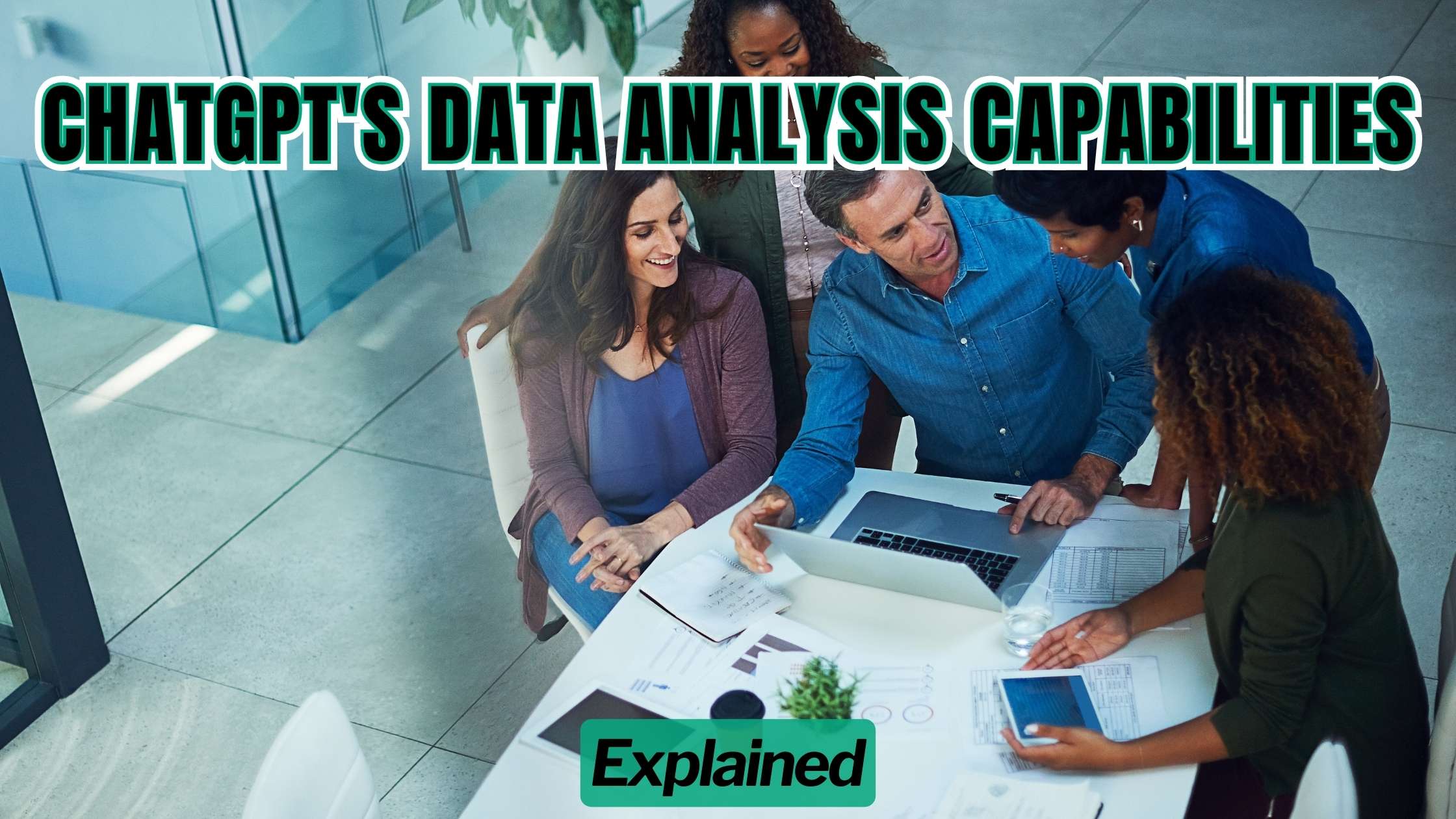ChatGPT’s Data Analysis Capabilities: Explained
- AI Image Generators Software AI Writing Assistant Popular Tools AI Tools


ChatGPT’s Data Analysis Capabilities: Explained
ChatGPT, powered by OpenAI’s state-of-the-art language model, has revolutionized the way businesses approach data analysis. In this article, we’ll delve into the intricacies of ChatGPT’s data analysis capabilities, exploring its features, applications, and the value it brings to data-driven decision-making processes. Whether you’re a data scientist, business analyst, or curious individual seeking insights into ChatGPT’s potential, this guide will provide you with a comprehensive understanding of its capabilities.
Understanding ChatGPT’s Data Analysis Features
1. Natural Language Understanding:
ChatGPT’s advanced natural language processing (NLP) capabilities enable it to comprehend and interpret unstructured data with remarkable accuracy. By analyzing text inputs, ChatGPT can extract key insights, identify trends, and discern patterns within large datasets, facilitating more informed decision-making processes.
2. Contextual Understanding:
One of ChatGPT’s distinguishing features is its ability to understand context and contextually relevant information. This contextual understanding allows ChatGPT to analyze data within the appropriate framework, considering factors such as industry-specific terminology, historical context, and user intent, resulting in more accurate and insightful analyses.
3. Data Summarization:
ChatGPT excels at summarizing large volumes of data into concise and informative summaries, making it easier for users to grasp the key takeaways and implications of complex datasets. Whether it’s summarizing research papers, financial reports, or customer feedback, ChatGPT’s data summarization capabilities can save time and effort while providing valuable insights.
4. Sentiment Analysis:
With its deep understanding of language nuances, ChatGPT can perform sentiment analysis on textual data, helping businesses gauge customer sentiment, brand perception, and market trends. By analyzing sentiment across various channels such as social media, customer reviews, and surveys, ChatGPT enables businesses to make data-driven decisions to enhance customer satisfaction and loyalty.
5. Data Visualization:
While ChatGPT primarily operates in the realm of natural language, it can also assist in data visualization tasks by generating descriptive text for charts, graphs, and other visual representations of data. By providing context and explanations for visual data, ChatGPT enhances the interpretability of data visualization outputs, enabling clearer communication of insights.
Relevant SaaS Products for Data Analysis
In addition to ChatGPT, several SaaS products offer complementary features and capabilities for data analysis:
- Tableau: Tableau is a powerful data visualization platform that enables users to create interactive and insightful dashboards from their data. With intuitive drag-and-drop functionality and advanced analytics capabilities, Tableau is a popular choice for organizations seeking to visualize and explore their data effectively.
- Google Data Studio: Google Data Studio is a free data visualization tool that allows users to create interactive reports and dashboards using data from various sources. With its seamless integration with Google products and other data sources, Google Data Studio enables users to visualize and share insights effortlessly.
- Power BI: Power BI is a business analytics tool by Microsoft that provides interactive visualizations and business intelligence capabilities. With features such as data modeling, AI-powered insights, and seamless integration with Microsoft products, Power BI empowers users to analyze data and share insights across their organization.
- Looker: Looker is a data analytics platform that offers data exploration, visualization, and collaboration features. With its scalable architecture and embedded analytics capabilities, Looker enables organizations to unlock the value of their data and drive data-driven decision-making processes.
- Domo: Domo is a cloud-based business intelligence platform that provides real-time data insights and visualization tools. With its intuitive interface and extensive library of pre-built connectors, Domo empowers users to access, analyze, and share data across their organization easily.
In aligning with the best practices of data analysis, platforms like Subscribed.FYI offer invaluable resources and insights for managing SaaS subscriptions and expenses effectively. Subscribed.FYI provides a centralized platform for discovering, comparing, and managing SaaS tools, including those relevant to data analysis and business intelligence. By accessing Subscribed.FYI Deals, users can unlock exclusive savings on essential SaaS products, empowering them to optimize their data analysis workflows and maximize their analytical capabilities.
Relevant Product Links:
Explore Subscribed.FYI:





